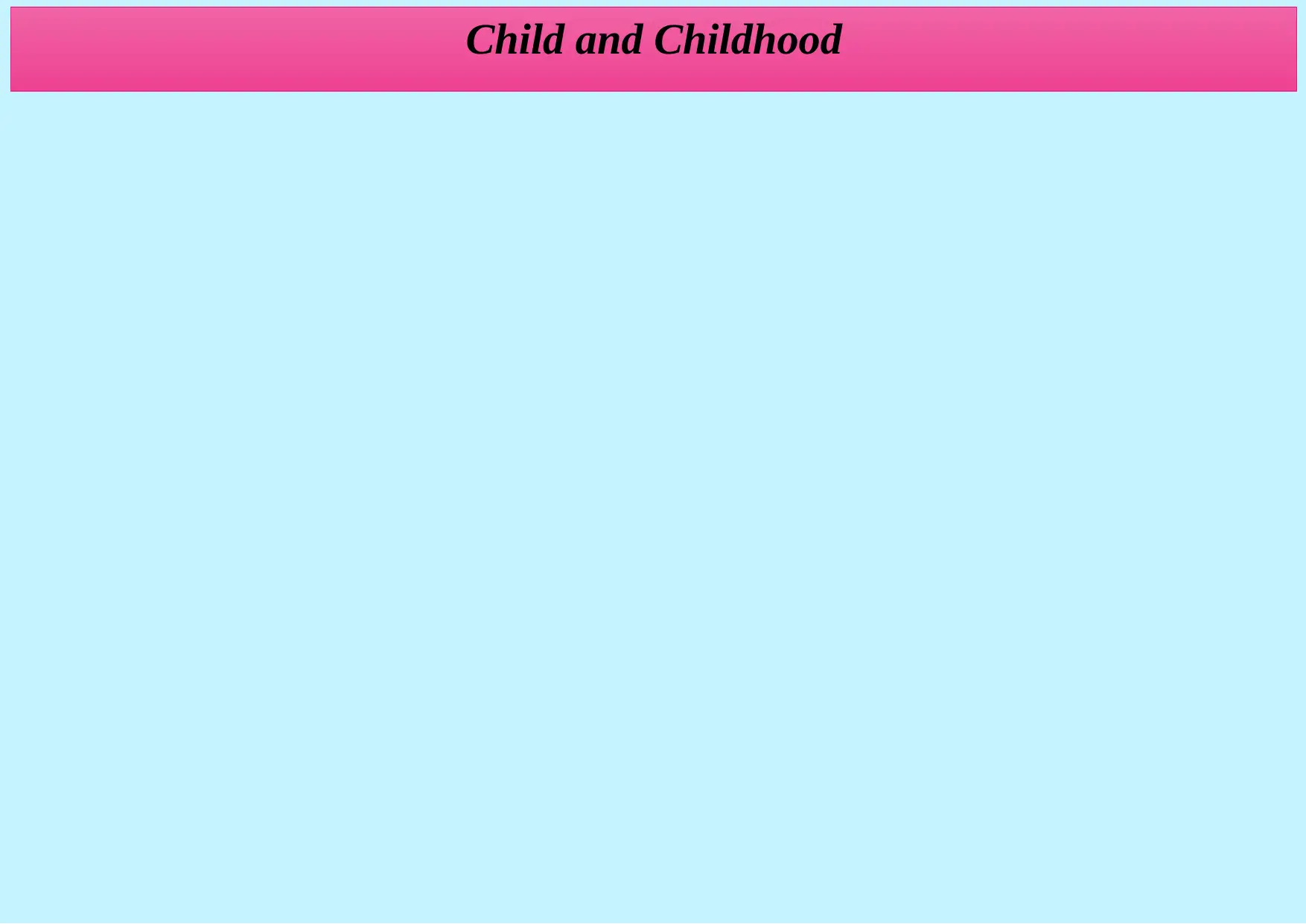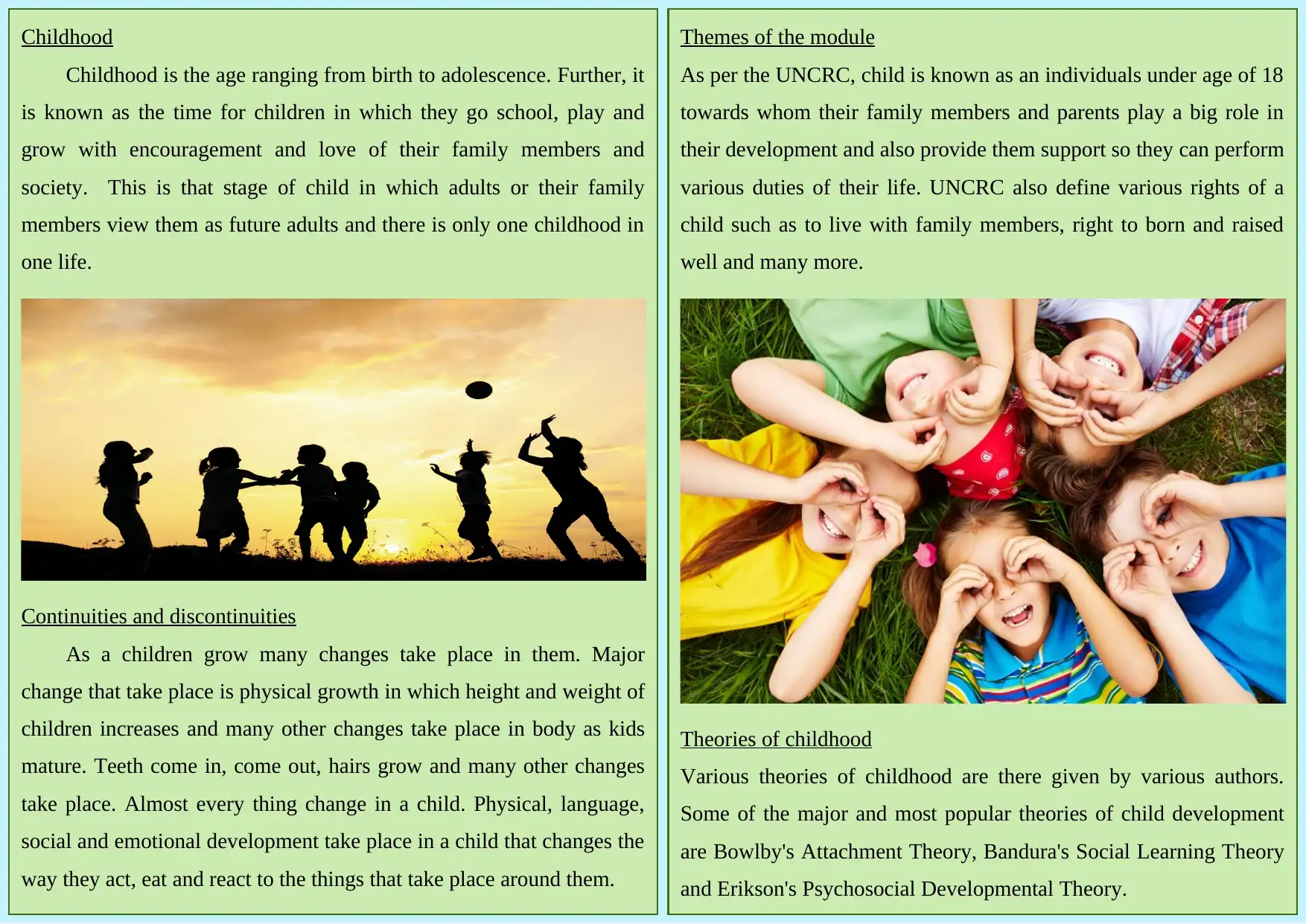Childhood: Theories, Practices, and Development Poster Presentation
VerifiedAdded on 2023/01/11
|2
|290
|30
Presentation
AI Summary
This presentation examines the concept of childhood, exploring its various dimensions through a poster format. It delves into the meaning of childhood, the perspectives of adults, and the historical evolution of these views. The presentation also explores the key themes of the module, including the influence of sociological and psychological theories like Bowlby's Attachment Theory, Bandura's Social Learning Theory, and Erikson's Psychosocial Developmental Theory, as well as the UNCRC's role in shaping childhood experiences. Furthermore, the presentation compares and contrasts childhood experiences in different cultural contexts, specifically comparing African and Western perspectives using the African Charter document to evaluate the impact of the UNCRC globally. The presentation aims to provide a comprehensive understanding of childhood, its development, and the factors that influence it.
1 out of 2






![Assessment Task 1: Child Development Report - [University Name]](/_next/image/?url=https%3A%2F%2Fdesklib.com%2Fmedia%2Fimages%2Fmy%2F6becc0b72f9b4358b3d9d5fd9a5b1ed8.jpg&w=256&q=75)

![[object Object]](/_next/static/media/star-bottom.7253800d.svg)